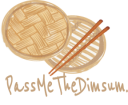Fish shaped cones. That’s pretty much the simplest way to describe Bungeoppang. They’re taking Instagram by storm and are quite the latest fad. Why on Earth should ice-cream be served in a fish shaped cone? I’ll never know for the life of me. All I knew as soon as I saw it on Instagram was that I had to find it and I had to have it. It was on my list of goals when I set off for Malaysia last month, but I had no idea I would stumble across a place that sells these on my first day there, at a Cafe Aboong in SS15.
M and I went out for dinner with his bff to Asia Cafe on Day 1 of our foodcation (a vacation taken solely with the intent of eating more than it is humanly possible to eat). We were aimlessly walking the alleys of Subang late at night, just having finished a fun board game at Meeples, and were pretty much on the verge of calling it a night when I suddenly saw this place and let out a joyous scream so loud that it must have woken a couple people up.
I couldn’t believe my luck! There was a big roll-up ad for their special, which as soon as I saw, I knew I need not even look at the rest of the menu. This bad boy promised for the soft, waffle-like cone to be made with Pandan flavored batter, and then stuffed with a dollop of Kaya, topped with frozen yogurt, Gula Melaka, roasted peanuts, and a skewer of bananas. Ded? Ded.
It was pricey (for Malaysia), at RM.12.90, but who ever skimps on food? Not I.
In case you’re wondering, Pandan is a tropical plant and a very popular flavor in Malaysian sweets. It’s also used for infusions in savory foods, and I personally love it. What I’m crazier about though, is Kaya. If there’s one thing that’s always synonymous with Malaysia in my head, its Kaya. Kaya is a rich, viscous, buttery spread made predominantly with eggs and coconut. What’s most Malaysian though, is Gula Melaka. As (best) described by Google, Gula Melaka “is made by extracting the sap from the budding flower of a date, coconut or sago palm. The sap is boiled until it thickens, leaving a sticky sugar that is whipped and dropped in lumps on cellophane, or poured into containers, traditionally bamboo tubes, where it solidifies.”
The million dollar question: Did the Bungeoppang taste all that and more? Nah. But I’d still definitely recommend trying it once, if you get the chance.









2 comments
Comments are closed.